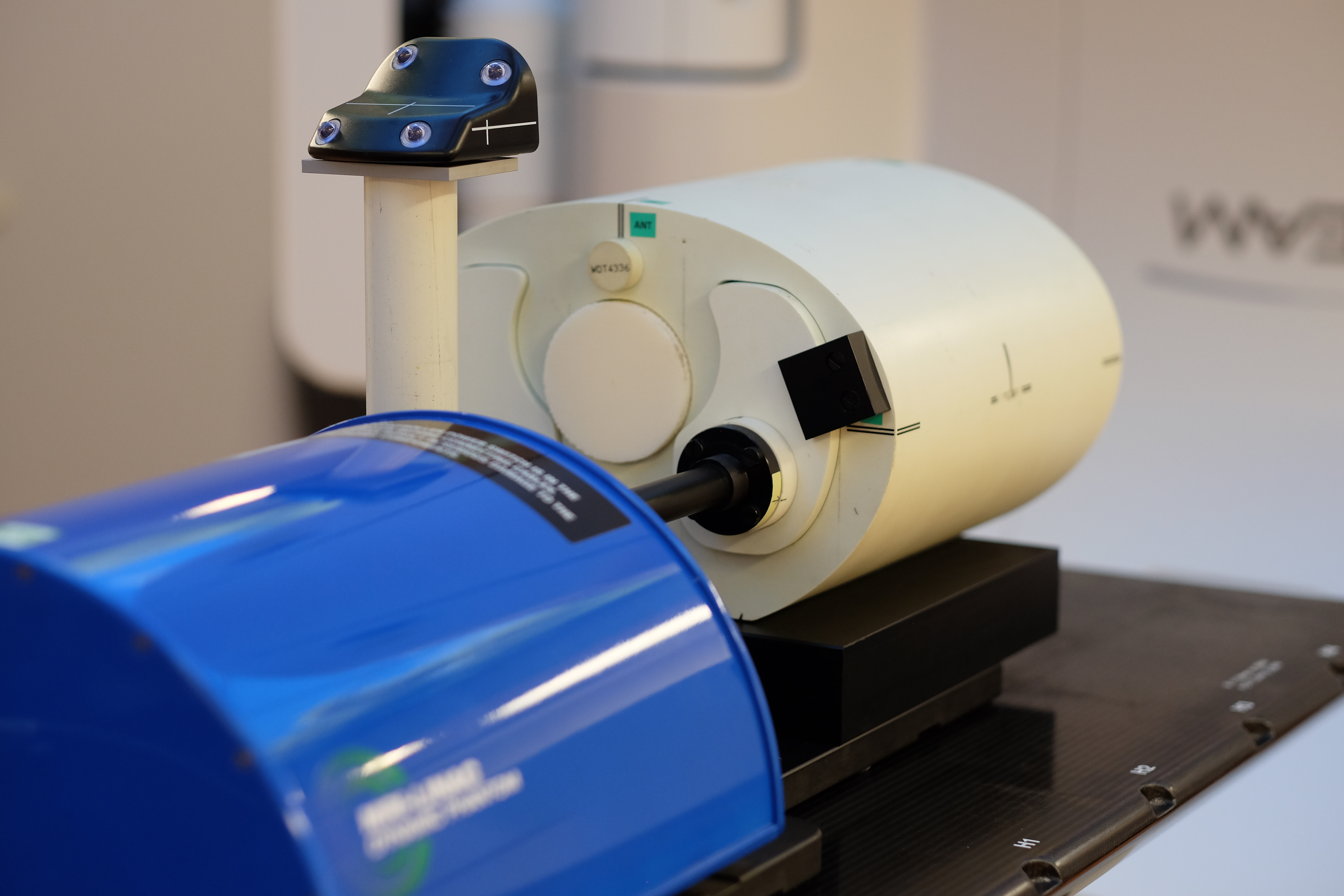What is a Level III audit?
Our Level III onsite audit determines dose delivered to selected points in an anthropomorphic phantom. This is an end-to-end audit where the phantom undergoes all steps within the radiotherapy planning and treatment pathway. Dosimetry measurements are made using Farmer type and CC13 ionisation chambers, microDiamond detectors and Gafchromic™ film.
Standard Level III audits include:
- 3DCRT
- IMRT
- VMAT
- SABR.
Cranial SRS and adaptive RT Level III audits are also available.
Cranial SRS
The cranial SRS audit is performed using a customised IMT MAX-HD™ Phantom, allowing for:
- optional detectors
- film placement inserts
- MR visible material.
It's compatible with:
- Conventional Linacs
- HyperArc
- Gamma Knife®
- CyberKnife®
- Halcyon™
- TomoTherapy® systems.
The detectors used are Gafchromic™ XD and EBT3 Film and PTW 60019 microDiamond point dose detectors.
The audit consists of five cases ranging from simple output measurements, a single SRS target, and multi-metastases treatments. A four-lesion multi-met case tests the geometric accuracy of targets visible on MRI only. A five-lesion multi-met case tests the performance of the SRS delivery system in very complex deliveries and is based on the TROG ASM 2017 competition dataset.

Online adaptive
This initial adaptive audit is offered as an extension of the standard Level III audit. Performed using our modified CIRS thorax audit phantom, it's designed for the Elekta Unity MR-Linac and Varian Ethos™ online adaptive radiotherapy systems. The central solid water IMRT insert for the thorax phantom is replaced with a water-filled replica for MR image matching and dose measurement.
Two new audit cases are introduced, testing the currently available adaptive radiotherapy workflows to treat the C-Series IMRT/VMAT tumour volume. The Elekta Unity’s adapt-to-position workflow is tested by adapting the standard C-Series plan to treat the same volume in a physically offset phantom. The case to test the Ethos’ AI-driven adaption and Unity’s adapt-to-shape workflows takes an initial plan based on a modified C-Series volume and generates an adapted plan to treat the standard C-Series volume. These adaptive audit cases use virtual targets that are provided in the planning structure set.
Further developments, such as adaption to a CT/MR visible tumour and MR-only planning, will be available in the motion adaptive audit.
Motion management and adaptive audits – In development
The ACDS has been developing a new Level III audit for respiratory motion management techniques. A new phantom has been designed to allow facilities to apply their clinical workflows for simulation, planning, image guidance and treatment for both passive and active motion management techniques, applied to two stereotactic body radiation therapy (SBRT) sites – lung and liver. This is achieved by providing targets which move periodically in the superior-inferior direction to simulate internal respiratory motion, coupled with an external platform that moves in the anterior-posterior direction. This enables the use of technologies essential to motion management, such as respiratory-correlated imaging (e.g. – 4DCT/CBCT) and gating using external monitoring devices.
 Figure 1: Respiratory motion management phantom
Figure 1: Respiratory motion management phantom
The first round of field trials for the Level III motion management audit began in November 2024. On-site visits by our auditors are required for both the CT simulation and audit delivery in order to streamline the audit protocol and to ensure that the information collected is consistent for establishing baseline data. We enjoy working with our clients to develop new and innovative audit procedures an appreciates any feedback during this phase of field trial.
The field trial is designed to audit four types of motion management:
- Passive MM
- Deep Inspiration Breath Hold (DIBH)
- End Expiration Breath Hold (EEBH)
- Free-Breathing Gating (FBG).
The CT scanning session will require a separate scan for each type of motion management performed at your clinic. We estimate that a CT scanning session can take between 1 to 2 hours, depending on how many types of MM scans are required for your field trial audit.
Planning contours have been created for the field trial and can be downloaded here:
Depending on how many cases you would like to have investigated for this field trial, we'll need between 2 to 5 hours of Linac time at your facility to perform the audit:
- 1 to 1.5 hours for set up and calibration
- 30 to 40 minutes per case.
Please discuss with our staff when booking your field trial appointments.
Datasets for download (last updated July 2025)
* Ensure download for the correct fusion dataset, corresponding with phantom that was scanned at your facility (Red or Yellow)
-
* - If you're having difficulty downloading this file, please contact us at acds@arpansa.gov.au for the latest dataset.
-
* - If you're having difficulty downloading this file, please contact us at acds@arpansa.gov.au for the latest dataset.


